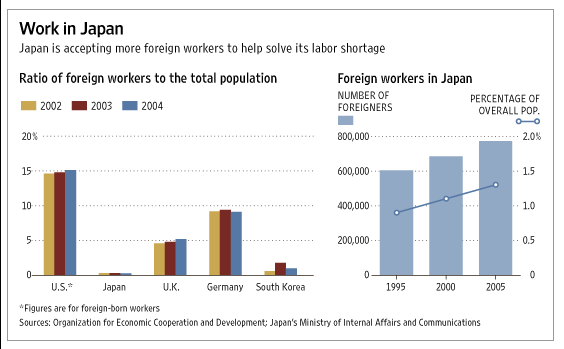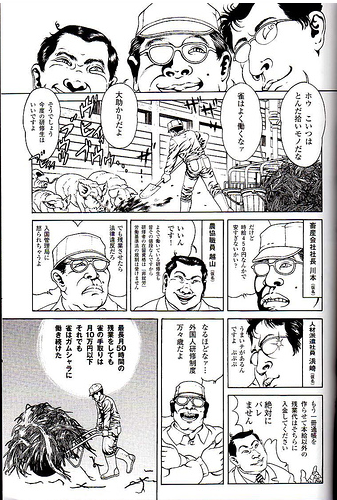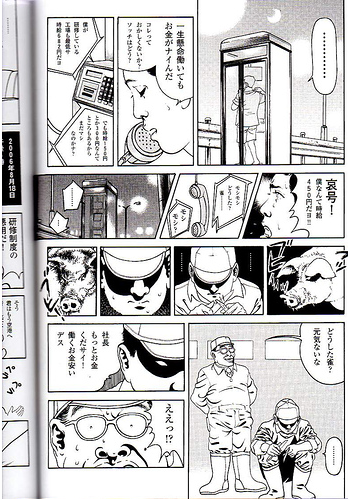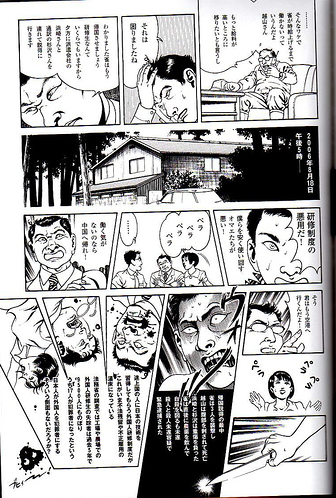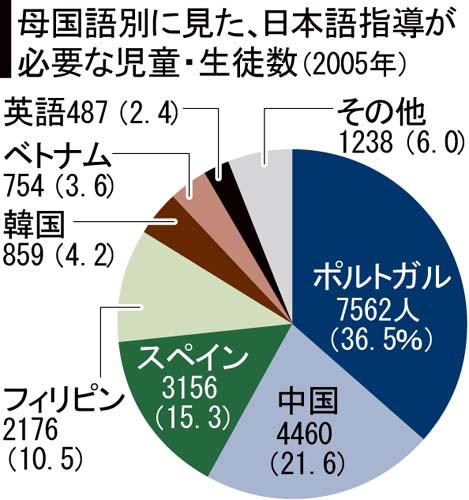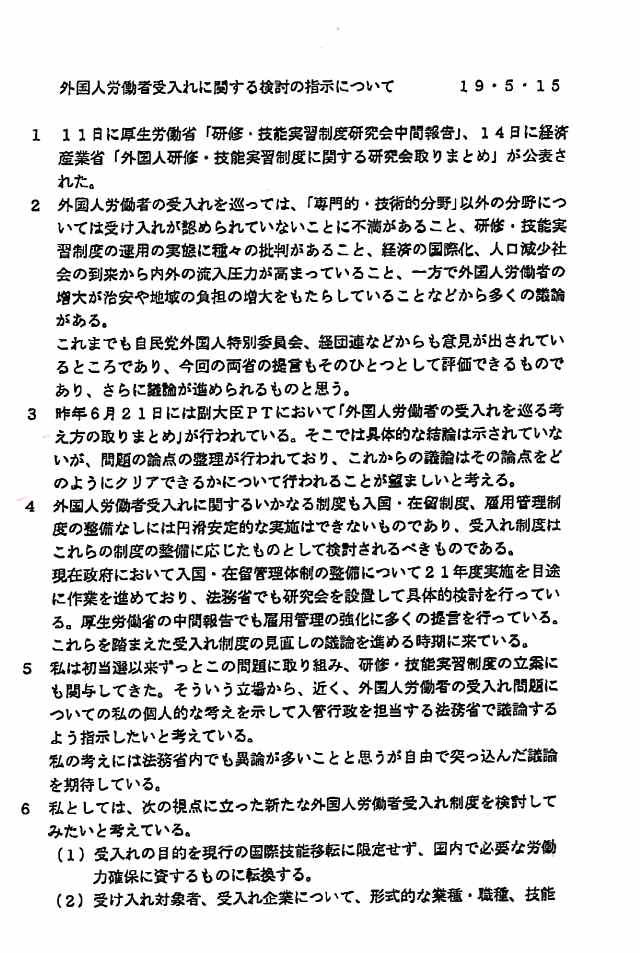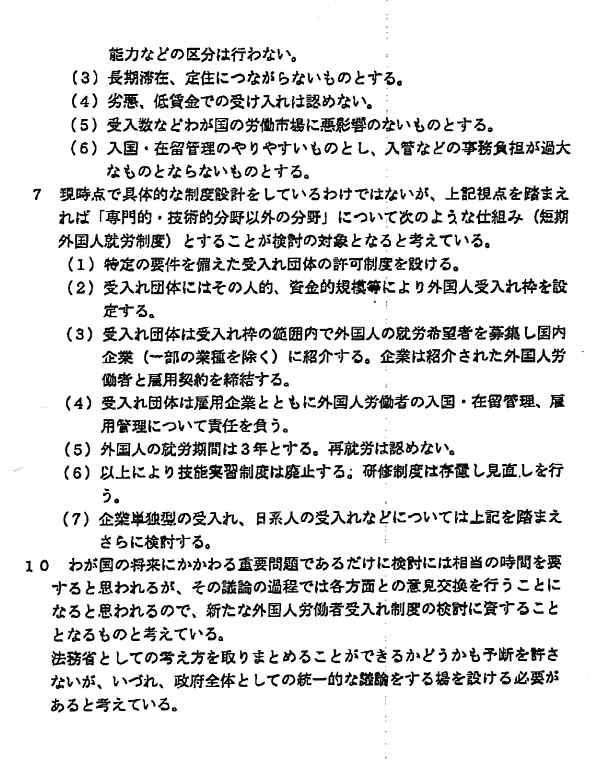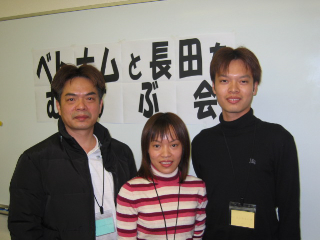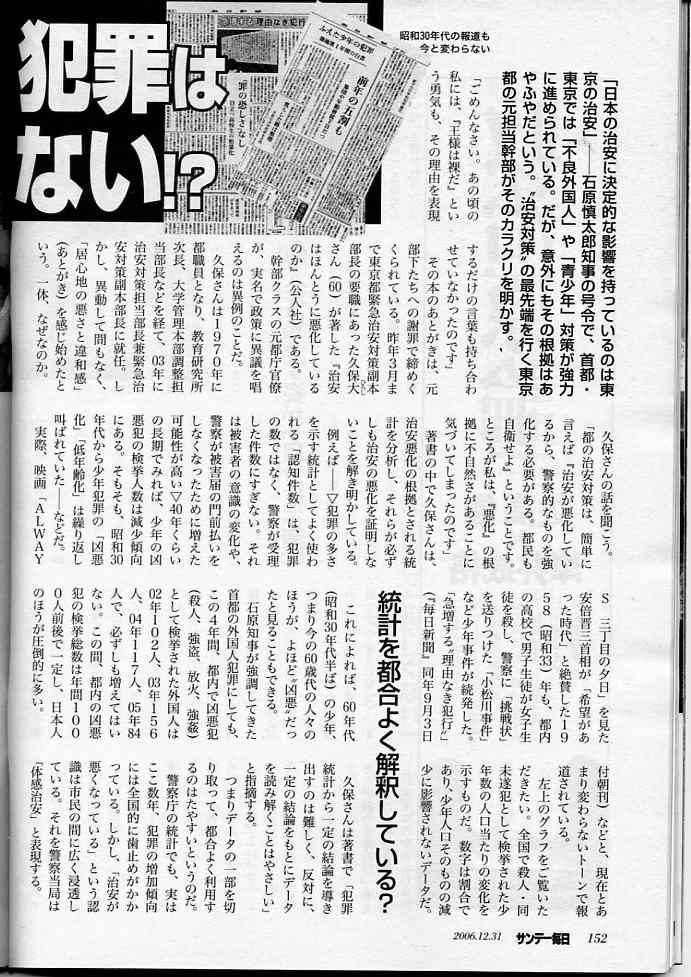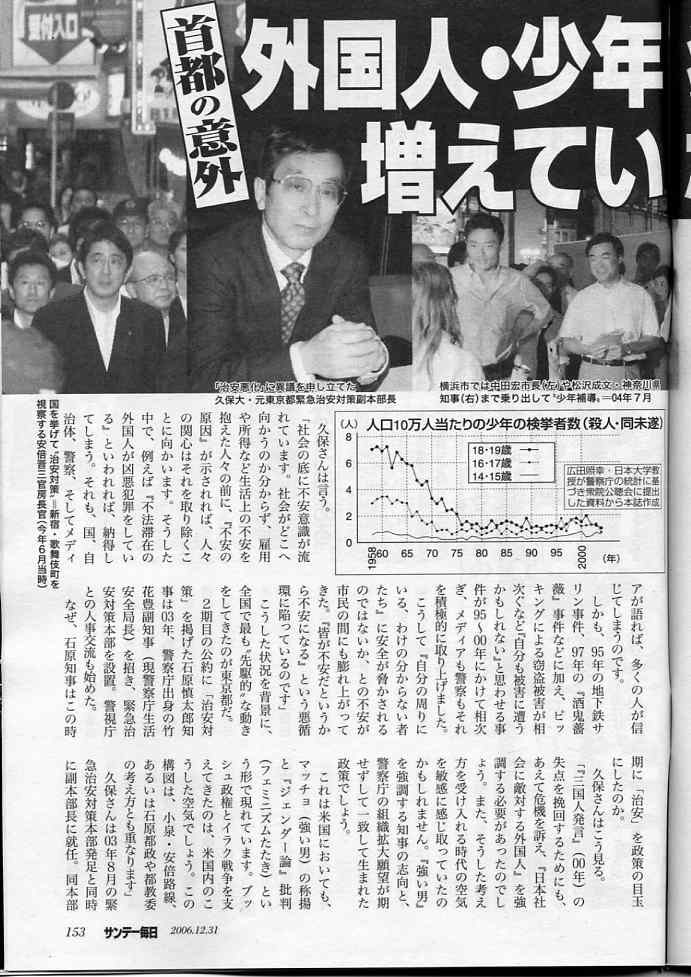mytest
Transcript of Press Conference with United Nations Special Rapporteur Doudou Diene and Debito Arudou at Foreign Correspondents Club of Japan
Feb. 26th, 2007, 12:30 to 2PM
(photo with Doudou Diene and Kevin Dobbs courtesy Kevin)

Note: This is an unofficial transcript with some minor editing for repetition, taken from a recording of the event. It is not an official FCCJ transcript.
PIO: Good afternoon ladies and gentlemen. Welcome to the Foreign Correspondents Club of Japan. My name is Pio d’E,millia, and I’m moderating today. Let me introduce our guests for today’s professional luncheon.
On my right, are the uyoku, Debito Arudou, probably the first time in his life he has been called uyoku…
DEBITO: I’ve been called worse.
PIO: . . . but I’m sorry for this discrimination. And then Doudou Diene, who is the UN Rapporteur on Racism, Xenophobia and Racial Discrimination. I think it’s a good idea that we organized this without knowing that, because today, as some of you may have noticed from the wires, we have another, probably historical statement by the minister of the government, of Education, Mr. Ibuki, who stated in Nagasaki that, thanks to the homogeneous society, Japan “has always been governed by the same race.’’
Now, I think this is a good starting point for today’s debate, because I was going to ask Mr. Diene, who has a very hectic schedule this week. He’s under the invitation of several groups in Japan, namely IMADR, the bar association of Japan, the University of Osaka, and excuse me if I’ve forgotten any others. Anyway, he’s on a lecture tour. He has been invited as Rapporteur to talk on racism in Japan. But, he’s also back from two other reports that he just finished. One is about Italy, and the other is about Switzerland. So, since I see other Italian press here, I’m sure Mr. Diene will be happy to answer questions on the other side of Europe. I’m sure that we will find out we’re far from being an innocent society.
Anyway, without further ado, I will leave microphone to Arudou Debito, the very famous initiator of a historical suit called Otaru Onsen suit. I asked him to be very, very brief because, by now, everybody knows that issue and you can take nice bath in Otaru. Please update recent us on not only the issues of the onsens but that of the “Gaijin Hanzai Ura Files.’’ It’s a magazine I’ve here. It’s become a collector’s item, and is selling on E-bay for 40,000 yen. So, I’m sorry, if you didn’t get by now, you won’t get it any more, and I’m sure Arudou can explain what is behind this. Just for the record, the FCCJ Professional Activities Chairman did try to contact both the publisher and editor of this magazine. The editor seemed to be interested in coming here to make his case. He did an interview with Japan Today, but he was stopped from coming by the omnipotent publishers in Japan. So, he’s not here. Arudou, please try to fill in both sides and be very objective.
DEBITO: Hello everyone. It’s a pleasure to be back here. It’s always a pleasure. Thank you very much. First of all, I have a handout for everybody.
[DOWNLOAD THE WHOLE FCCJ HANDOUT AT https://www.debito.org/dienefccjhandout022607.doc]
It’s three pages, starting with the report to Special Rapporteur Dr. Doudou Diene, on his third trip to Japan, February 2007. These are the contents of a folder I’m going to be giving him, along with several articles and several books, including the Gaijin Hanzai file, of course. I’m not going to be focusing on this. This is for you to take home. There’s lots of information, too much to get into within 10 minutes.
So, let me go over the visuals. Take a look at the screen.
[DOWNLOAD THE WHOLE FCCJ POWERPOINT PRESENTATION AT https://www.debito.org/fccj022607.ppt]
Is anything changing? That’s what I was asked and I’m going to fill you in on a few things that might interest you. This is, for example, a Japanese Only sign in 2000. These things still exist in Japan. In fact, they’re spreading. And that’s what I’m going to make the case to you today.
All right, moving on. First of all, why does this matter? For one thing, 40,000 international marriages in Japan. In 2000, it was 30,000 marriages. It’s going up, and quite dramatically. And, children of these registered marriages do not show up as foreigners. Because they’re not foreigners, they’re Japanese citizens. Therefore, children of these marriages are coming into our society as Japanese, even though they might not necessarily look Japanese. That will make for a sea change in Japan’s future.
And, you’ll never see where they are because they are invisible statistically. Japan’s census bureau does not measure for ethnicity. If you write down your nationality, in my case “Japanese’’, there is no way for me to write that I am a Japanese with American roots. That’s a problem. You have to show ethnicity because Japan is diversifying. It is a fact, and one reason is international marriages.
And Japan needs foreigners. They are not here by accident. One reason: record low birthrates and record high lifetime expectancy. The United Nations now says Japan will soon have the largest percentage of elderly in the world. That’s old news. As of 2006, the Health Ministry says Japan’s population is actually decreasing, and will fall to 100 million in 50 years, actually 43 years. So, that means the number of foreigners who came in 2005 actually plugged the hole. We have a net annual of 50,000 foreigners per year influx. Now keep in mind that 50,000 for a minute because it’s important. Both the United Nations and the Obuchi Cabinet in 2000 said that Japan must import 600,000 workers per year.
How many are we now importing? 50,000, or less than 1/10th of what we need in order to maintain our current standard of living. That is a fact. Even our government acknowledges that. Japan is already importing workers to make up for the labor shortage and alleviate the hollowing out of domestic industries. We’re not going to let our factories go overseas. We’ll hire cheap workers, and give them trainee and researcher visas. One result of that is, between 1990 and 2007, we now have more than 300,000 Brazilians. They are now the third largest minority, and the numbers are increasing.
Given that there is this many foreigners here, more than 2 million total, without legal protections against discrimination, will foreigners want to stay in Japan and contribute? Japan’s government says we need them. So, help make it easy for them to stay. Well, let’s talk about problems with that. For example, and this isn’t a problem per say. This is Newsweek Japan from September of last year. All of these three people in the picture? They’re Japanese citizens, just like me. We are the future. Japan’s media is also talking about this as well. Look at that. Imin Rettou Nippon. Without foreigners, the Toyota system won’t work. This is the cover of Shukan Diamond, June 5th, 2004. Why is Toyota at number two in the world now? Foreigners. Cheap labor. Working for half the pay of their Japanese counterparts and no social benefits. However, Japan is the only major industrialized nation without any form of a law against racial discrimination.
And it shows. For example, the Otaru Onsens case. Pio said we all know it, so I’m going to skip it. Well, if you want information on it, here are my books, in English and in Japanese. And you can go to my website at debito.org for all the information you’ll ever need.
Let’s take a look at one case study. Who are these two here? Can I have a little bit of reaction here? An “awwww” Those are my kids, 10 years ago, maybe a little more. They were born and raised in Japan and are native speakers of Japanese and are Japanese citizens. Now look at this. They’re actually a little bit different-looking, aren’t they, even though they have the same parents –as far as I know! We went to one particular onsen in Otaru. What do you think happened? They said, “This one can’t come in.’’ Ha-ha-ha. Your daughter looks foreign. We’ll have to refuse her entry, even though she’s a Japanese citizen.
I’m summarizing the case to the bare fingertips, all the way down to the cuticles. That’s the best I can do in 10 minutes. We have another case here where I got Japanese citizenship in 2000. And there I am in front of the onsen. A nice big onsen, not a mom-and-pop place. I went back there on October 31st, and what do you think they said? Not “Take off your mask.’’ They said, “We accept that you have citizenship (I showed them proof)’’. But they said, “You don’t look Japanese, therefore in order to avoid misunderstandings, we’ll have to refuse you entry.’’
So, it’s no longer a matter of foreigner discrimination. It’s a matter of racial discrimination. They refused one of my daughters and they refused me. There’s a couple of signs there saying `Japanese Only’. Also, in Mombetsu, Wakkanai, there are signs, including in the middle of the mountains, where people say, “Russian sailors, this. . .’’ There are no Russian sailors in the middle of the mountains. Even in Sapporo. There are signs up in every language but Japanese for the 2002 World Cup. Those signs are still up today, except for the ones in Otaru. The moral of this tale is if you don’t have the legal means to stop this sort of thing, it spreads nationwide. Misawa. Akita. Tokyo. Saitama. . . here’s a few signs. Is the point becoming clear? Nagoya. Kyoto. Hamamatsu. Kurashiki. Hiroshima. Kitakyushu. Fukuoka. Okinawa. All of this information in on the website.
It’s getting worse, it’s nationwide. “Japanese Only’’ signs have been found at bathhouses, discos, stores, hotels, restaurants, karaoke lounges, pachinko parlors, ramen shops, barber shops, swimming pools, an eyeglass store, a sports store, and woman’s footbath establishment. Huh? “Japanese Women Only’’ They said they would not allow foreign women in because their feet are too big. (sounds of audience laughter) That is quote. “Because their feet are too big.’’ Give them a call, ask them.
Conclusions? It’s difficult to establish who is Japanese and who is not just by looking at their face. Which, as for “Japanese Only’’ signs, means let’s get out of the exclusivity thing. Things that happen to foreigners only affect foreigners? You’re wrong. Because of Japan’s internationalization, we’re going to have situations where even Japanese citizens get refused. A more profound conclusion is that “Japanese Only’’ signs are unconstitutional. They also violate international treaties, which Japan affected in 1996. They promised over 10 years ago to pass a law, but they never did.
These “Japanese Only’’ establishments are unconstitutional, but they are not illegal because there is no law to enforce the constitution. We took it to the streets and did what we could. The Hokkaido Shimbun agreed that refusing bathing was racial discrimination. We also took it to the courts. To summarize it, even the Supreme Court dismissed the case against the city of Otaru, saying it’s not involving any constitutional issues, which is ludicrous. It touches on article 14.
Here’s what everybody wants to know. We still have no form of law against racial discrimination in Japan. “Japanese Only’’ signs are still legal. We have official policy pushes against foreigners, and shadowy propaganda campaigns against any bill protecting their rights. For example, Shizuoka’ policy agency had a crime pamphlet in 2001. “Characteristics of Foreign Crime’’. It was put out by the police and distributed to shopkeepers. There were also NPA notices against foreign bag-snatchers and knifers. You can find such signs at bank ATMs and subways. You have a darkie guy speaking in katakana to a pure white Japanese, speaking in Japanese. So, the message is that foreigners are off-color and carry knives. These are put out by police.
Also, the NPA decided to deputize every hotel in Japan. How? If you take a look here. “Japanese legislation makes it mandatory that you, as a non-resident foreign guest, present your passport and have it photocopied. It says that all non-resident foreigners must show their passport. But the notice that the customers see is this one: “Japanese law requires that we ask every foreign guest for a passport.’’ That’s willful misinterpretation of the law. I’ve been asked for my passport even though I’m a Japanese citizen.
Now, we talked about this a minute ago. Here’s the Gaijin Underground Crime Files. It says on the cover that “everyone will be a target of foreign crime in 2007.’’ It further says, “Will we let gaijin lay waste to Japan?’’ That’s how foreigners are portrayed in this magazine. It is by Eichi Shuppan. Cheap. No advertising. The publisher is Mr. Joey H. Washington. Who is Joey H. Washington? I’ve asked, but have not gotten an answer. No advertising at all.
Who is funding this? We don’t know. There’s been no answer. Sold it in convenience stores nationwide. You can see the whole thing on-line for free at this address. Now, Pio is giving me the time thing. Gotta go. As far as the United Nations is concerned, it says that in the ICERD that “all dissemination of ideas on racial superiority, hatred, and incitement to racial discrimination shall be a declared offense punishable by law, including the financing thereof’’. A little bit more succinct is the International Convention on Civil and Political Rights which Japan affected in 1979. “Any advocacy, etc. etc.’
Moving on, let’s talk about incitement to hatred. . . “You bitches! Are gaijin really that good?’’ This is from the crime magazine. Is this a crime? Groping might be a crime, stalking might be a crime. But kissing on the street? It’s not crime. And here, they’re talking about male member size. This is not exactly friendly stuff. “Hey, nigger! Get your hands off that Japanese girl’s ass!’’ Then there is the manga, where a Chinese drowns a Japanese wife, and says, “right, that’s put paid to one of them. I wonder where they got the evidence that he smiled as he drowned this person? And to conclude it, the manga says, “Can they kill people this way, in a way that is unthinkable to Japanese? Is it just because they’re Chinese?’’ Is this encouraging brotherly love? How we doing on time, Pio? Let me cut it off there.
PIO: If you lose your job as a professor, you can go around the world and do presentations. You’re really good at presentations. Doudou Diene has been waiting for a long time. Thank you for your patience and please go ahead.
DIENE: Thank you very much. I will be brief. I very much enjoyed this encounter. Anytime I come to Tokyo, and I would like to share with you two points. One, my main observation worldwide and after my visit to Japan and my follow up visit, on the world scene, there are three points that are strongly indicated in my report. One is the increase of violence, violent acts and killings due to racism. . .[garbled] In Russia, I was there to investigate racism. People had been killed in the streets of Moscow. Second, and more serious, is what I call the democratization or legislation of racism which is expressed by two things. One, is the way the racist political platforms are slowly but deeply infiltrating the democratic system and political parties under the guise of debating illegal immigration, asylum seekers, and now terrorism. When you analyze the program of political parties in many countries, you will see the rhetorical concepts, views being banalized. But more serious than the concept of banalization, is that you’re now seeing more and more governments composed of democratic parties and extreme right parties. You have it in Denmark, Switzerland, and we’ll know by May if we have it in France.
But when you analyze it more carefully, you see that extreme right party leaders were getting into government, to the center of power, and occupying strategic posts like the Minister of Justice. They are then in a position to implement their agenda. We are witnessing this development. It is a very serious one.
More serious, but in the same dynamic, is the fact that extreme right parties are advocating a xenophobic agenda, and they are being elected because of this agenda, especially in regional parliaments. Berlin elected seven representatives of extreme right parties. In the European Parliament, the extreme right has enough seats to constitute a parliamentary group.
So, the point is democratization and banalization of racism and xenophobia. Third point is the emergence of development of the racism of the elites, especially the upper class, intellectual and political. We are seeing now more and more books and studies being published by intellectuals, like Samuel Huntingdon’s “Who are We?’’ The central point of the book was that the increasing presence of Latinos was a threat to America’s identity. You’re seeing more and more crude expressions of racism in publications by university publishers. But the racism of the elites is also expressed by the birth of uncontrolled sensitivities? One French author said Africans were undeveloped because of their penis size. He added that they should be sterilized. So, he has crossed two red lines. One is an old racial stereotype about Africans and sex, and bestiality of Africans. It was largely forgotten, but is being revived by people like this man. Why did he call for sterilization? Historically, this has been the first step to advocating genocide, because sterilization means elimination of a group. This opinion was expressed by a key member of the French public on television.
Another example, also in France, [garbled] a local politician said there were too many black people on the French national soccer team, and that there should be more white people. It was a member of the Socialist Party, not an extreme right-wing party that said this. I provide these examples to show that we are seeing these statements by a growing number of elites.
You may ask why. I think that from this racism of the elites, which is coming strongly. . . because of the banalization, the opening of the door, anti-Semitism and racism are now coming back, being legitimized, despite very strong opposition in Europe. My role is not to denounce or to only present a dark picture of racism worldwide but also to share with the international community and the UN General Assembly the attempts to understand why it is happening internationally. Here, I’m trying to get something more positive. Postive in the sense that I really believe it, behind the increase of violence and killings due to racism, this verbal increase in racism by the so-called elites, I think we are witnessing something deeper, which is one of the causes of what I call a crisis of identity. The fact that in Europe, Africa, and Japan, the national identity, as it was framed by the elites, as it was put into the Constitution, disseminated through education, appeared in literature, and then in the minds and psyche of people, the national identity in the form of a nation-state is no longer conformed to the multi-cultural dynamic of societies.
The societies are becoming more pluralistic, multicultural. This trend contradicts the national identity as it was once defined, and still being promoted. It is precisely this clash which is being politically used by extreme right wing groups, penetrating the programs of political parties, whenever the issue of foreigners is concerned, especially in the debates on immigration and asylum seekers and their integration.
Indeed, if you take the debates on immigration in many countries, it’s what I call and “integration strip-tease’’. It’s a strip-tease in the sense that what governments are asking is for foreign immigrants to “undress’’ at the border. To undress their cultural, religious, and ethnic specificity. This discourse is being discussed and put into law. One discussion we here in the EU is on Turkey. Fundamentally, the issue of identity is at the core of the development of racism. The way the elites and, indeed, societies themselves, are facing their multiculturalization. The refusal to accept this reality is one of the sources of racism. It expressed by the elites because they are the ones who construct national identities, and they feel threatened. Now, what is the dynamic behind it? This means that the combat against racism and violent acts associated with racism has to be linked to the construction of truly multicultural societies, democratic, interactive, multicultural, and equal.
This point leads me to Japan. As you know, my report was submitted to the Human Rights Council and to the UN General Assembly last November. Three points on this report. One, I think there were many interesting developments after my report. The issue of racism is now a key issue here in Japan. It has been for a while. But my report has contributed in a way to help the issue be discussed. Second, my report had a very important consequence, which I’ve been advocating in all countries I visited. This is the mobilization of civil society and human rights organizations on the issue of racism. Japan has been advancing the issue, I must say. Japan’s civil society has organized around my report and created a network of minority communities and human rights organizations, and are acting by helping victims of discrimination, publishing reports, and drawing the attention of the media.
For me, this is central. Combating racism is not the exclusive domain of government. Civil society has to be involved and a key actor. This is happening now in Japan. The last consequence of last November’s report on Japan is that the way my report was received by the Japanese government. As you know, the initial reaction was very negative. Indeed, the Foreign Ministry told me they were not happy.
One key point the Japanese government made to the Human Rights Council in Geneva was to say that I had gone beyond my mandate in touching upon the role of history in racism. I put it as one sample point. Racism does not come from the cosmos. Racism is a historical construction. You can retrace how racism was born and developed, and how it manifests itself. This means that history is a sin for which communities have been demonized and discriminated. So, I did make that point in my report, referring to both the internal discrimination in referring to Japanese communities like the buraku community and the Ainu, and it is indeed linked to Japanese history and society. And the racism against Koreans and Chinese is part of the history of Japan from which all this racism eminated.
One of my conclusions was, beyond calling for the adoption of national legislation against racism and all forms of discrimination, I did invite the Japanese government to cooperate with regional governments like China to start cooperating on a general history of the region. And I did propose in my report, and we’ve done this elsewhere, a group of international historians to develop a report. I said that by drafting this history, it will help touch on the deeper issue of racism and discrimination against Koreans, Chinese here. Japanese may also be discriminated elsewhere. The process may lead to a more profound re-encounter and reassessment of the old linkages and legacies. I pointed out that if you read Japanese history books, the picture given of the history of Japan, China, and Korea is that of the short-term. I did say that if the Japanese government decides to teach the longer-term histories of the relations of these countries, Japanese will remember that Korea and China are the mother and father of Japan, for language and religion, and whatever else. The Japanese make it original, something Japanese. But the deeper source is more profound and comes from China and Korea, but this is forgotten. I did say that if you teach this clearly, Japanese will realize this, and realize that discrimination is occurring against Koreans and Chinese.
There is something going on in the Japanese government, I think the fact that the accepted my visit was an indication that they place the human rights issue of some importance. It is never pleasant for a government to invite a special Rapporteur. You are considered a nuisance. But, they did invite me to come, so I came. This means that, somehow, they recognize there is an issue here. I take it that sense. So, on the historical issue, after having negatively reacted in Geneva last summer to my conclusions by saying I’d gone beyond my mandate with regards to bringing up historical issues, in November, at the UN, the Japanese delegates informed the UN that the process has started of contacts between Japanese, Chinese, and Korean historians. I say excellent. But my recommendation was that this process of drafting historical revisions to get to the deep root causes of these issues should be coordinated by UNESCO, as UNESCO has done it in the past. They can give it a more objective framework, and can eliminate the political tensions which may come from this process.
So, I think this is a demonstration that something is going on. Now, in conclusion, my visit to Japan is not a one-time, final act. It is a beginning of a process for which Japanese racism will be monitored as we monitor it other countries: Russia, or my own country, Senegal. Each and every year, I will come back to the situation in Japan as follow-up. I will inform the international community of whatever developments occur, negative or positive, to bring the issue to the attention of the United Nations where it can be discussed. Tonight, there is a debate at the Japanese Bar Association from 6 p.m. to 9 p.m. on racism. So, the mobilization of legal establishment to engage in the combat against racism is a fantastic step. I am now ready to answer any questions you might have. Thank you.
PIO: Thank you, and the next time you come to Japan, I hope you can meet with the Education minister, Ibuki.
DIENE: I do hope so. But I will quote him in my next report.
Q: Stefano XXXX, Italian Daily News [garbled] What were your findings in Europe and Italy, especially compared to Japan? For Debito, I have a question. There is no way to raise the interest of my foreign desk editor in the magazine you mentioned (Gaijin Hanzai File) because they will say, “Well, it’s not on the front page of the Yomiuri Shimbun’’. Why is it important to raise this issue, even if there are, in other countries, garbage press saying some bad things, especially in Europe?
DIENE: On Italy, I visited Italy in October. My demand to visit Italy dated from a year and a half ago when Berlisconi was Prime Minister. I was concerned of the policies I’d been informed of and wanted to check the reality with the new government. In my report, I formulated three recommendations and conclusions. One, racism is not a profound reality in Italy.
But, my second conclusion was that there was a dynamic of racism and xenophobia. There is no deeply-rooted racism. At least I did not find it in my investigations. But there is dynamic of racism caused by two developments. One is the legacy of the previous government. The government was composed of democratic parties and extreme right parties.
This agenda influenced the previous government’s policies towards immigration and was translated into law. That government, by their policies and programs, have created this dynamic. The second reason was that Italy was confronted in the past few years with a very dramatic migration and immigration process. You know, all of these boats coming from Africa, north and south. The dying of hundreds on the sea, and camps being established in Italy and Sicily, and these were shown in the media every day. Certainly, showing this in the media every day had an impact. Lastly, the political manipulation by the extreme right parties and Italy was also facing an identity crisis because the national identity of Italy is no longer framed to the process of multiculturalization. This created a tension. There is a dynamic. If it is not checked, racism will become rooted in Italy. So these are my main conclusions.
DEBITO: All right. I think the root of your question is, what is the peg for the Italian press? If it’s not on the cover of the Yomiuri, who cares? Well, why should you let the Yomiuri decide what you report in Italy? That seems illogical to me to begin with.
You’re looking for a peg? Here’s your peg: we got the book off the shelves. That book right there is a screed. You think it’s only going to affect non-Japanese? Well, it’s going to affect Japanese, too. We’re talking about the incipient racist reaction to Japan’s internationalizing society. That is news, and it’s not reported on enough. Look, the fact that we got the book off the shelves is pretty remarkable. I mean, as I wrote in my rebuttal to Mr. Saka when he said, “Hey, we just published this because it’s freedom of speech about a taboo subject’’. Wrong.
As I wrote here, it’s not like this is a fair fight. We don’t have an entire publishing house at our disposal with access to every convenience store in Japan so we can publish a rebuttal side-by-side. And the fact that the Japanese press has completely ignored this issue is indicative of how stacked the domestic debate is against us. You think the domestic press is going to go to bat for us and naturally restore balance to the national debate on foreign crime and on internationalization? The domestic press completely ignored this. There’s a reason for that. Real, naked racism is not something that people want to discuss. The fact that we actually stood up for ourselves and said, “Look, we might be foreigners but we do count. We do have money.’’ Myself, I said that, OK, I’m not a foreigner but this kind of thing is going to affect me, too.
And we’re going to exercise the only invaluable right we have in this country: the right where to spend our money. If you sell it at this place, we’re not going to buy anything at this place. Take it off your shelves. We actually took the book off the shelves, and said, “Look, it says `nigger’ here. Look, it shows Chinese killing people and smiling about it. This is gutter press. Do you really want to sell this sort of thing?’’ And they said, “No, we don’t really.’’ And every single place eventually took it off the shelves. This happened only because the strength of our conviction. The press didn’t shame anybody into doing that. We did that. That’s news, because we count now. We are not going to be ignored. We’re going to stand up for ourselves. And that, I think, is a peg.
PIO: The problem is the peg is now sold on e-bay for 40,000 yen. But, OK.
Q: My name is {garbled} I’m from the economic and political weekly of India. I have two questions, one for Dr. Diene and one for Mr. Arudou. For Dr. Diene: do you think your report will have any reprocussions on Japan entering the Security Council? Or should it have any reprocussions on Japan’s entry? Can a nation that practices racism so avidly be a member of the Security Council? For Mr. Arudou, I’ve followed your efforts. I believe the legal route is one route to go in attacking this problem. The other way is hitting them in the pocketbook. Japanese are great exporters of their tourist sites, and there is nothing like the Japanese tourist industry. How should we hit them there?
DEBITO: We meaning who?
Q: Us, and the press. Because I think that once you have frontally faced them through the press. There are a lot of cyberworkers from India who come here. I think we can do something by petitioning the Indian government through our journals and writings.
DIENE: On the first question. It was raised the last time I was here. I did say it was a very dangerous question for me to answer. The Japanese government is going to monitor my answer very closely. But I will give you my reading of it. I don’t think that the existence and the relative presence of racism should be one of the criteria for a country to get to the Security Council when racism is not an official policy or position of the government in question. Indeed, I did not say anywhere in my report that racism is the official policy of the [Japanese] government. This is contrary to South African apartheid. If the simple existence of racism was one of the criteria, the Security Council would be emptied. No country would be there. What should be part of the criteria is they way the Japanese government accepts the international rules of human rights and accepts the international instruments it has signed.
And I do think, indeed, that they are doing so because they accepted my visit. Some governments don’t. For example, I’m still waiting for the Indian government to accept my visit. I’ve been waiting for two years. They told me, “come’’ but don’t touch on the [garbled]. So, the fact that the Japanese government has accepted my visit is a very positive sign. And I do think that in the coming years they are going to implement some of my recommendations. I have no guns, armies or weapons of mass destructions to make them oblige.
But my reports keep going to Human Rights Council and General Assembly. I do think we are in the process of change. I don’t want to isolate, punish, or condemn any government. Racism is a deeply rooted reality in whatever form, whatever society. It exists everywhere. My role is to contribute to its recognition and the way it is being fought. I’m interested in cooperating with Japanese government and Japanese society in helping face these deeply rooted issues. Now, just before Arudou, you touch on something that is often forgotten when combating racism, the role of tourism. People don’t realize that tourism is the most fantastic dynamic of human encounter. Tourism, the way it is practiced now, is only on the economic dimension. It’s not helping promoting a deeper human encounter and interaction. I’ve been launching a program in UNESCO, my Silk Road. We are trying to develop a new concept of intercultural tourism. Tourism should promote a more profound knowledge.
DEBITO: Thank you. I almost got what I was looking for here right now on the Internet, but the connection in this room is a little slow. To answer the question about tourism. Why is the Japanese government doing the `Yokoso Japan’ tourism campaign? Because our exports aren’t doing so hot, and our imports aren’t doing so hot and we ought to do something about our economy. So, let’s bring in more tourists. Well, what are you doing to make it a bit more welcoming? That’s what they want. Well, what about those “Japanese Only’’ signs that are up? What about the fact that every time you check into a hotel you’re going to be treated like a criminal?
The Japanese embassy in Washington is telling foreigners they’ll have their passports checked when the check into a hotel for “effective control of infectious diseases and terrorism”(audience laughter). Now, infectious diseases? Japanese don’t carry infectious diseases, do they? Of course not. And terrorism? The biggest terrorist attacks we’ve had in this country have all been carried out by Japanese. There’s an air of hypocrisy in saying “come here, we’ll take your money. But we’re not going to welcome you in the same standard you’d be welcomed overseas.
DIENE: Just to contradict a little bit my friend Arudou. On the issue of passports and checking in at hotels. As an African, I travel quite a bit and in most of the countries I visited, I’ve been asked the same question. Not only at the border but also at the hotel. Since 9/11, it has become a general reality that a foreigner is suspect. When the foreigner is ethnically or religiously different, he is more suspect. This is the reality.
DEBITO: Just a caveat, though. As I said earlier, they are corrupting the law to say all foreigners must show their passports. That is against the law and should be pointed out. It’s happening in Japan to all foreigners.
PIO: I sympathize with you. Because even Italy checks with Italian citizens in hotels.
Q: My name is Lewis Carlet from the National Union of General Workers and I’d like to follow up on the gentleman from the Italian press about his comment that it’s not front-page news on the Yomiuri. I’d like to point out that, between January 30th and Feb. 6th, Asahi Shimbun ran a series called “Africans of Kabuki-cho’’. Several articles, though not quite as vicious as the magazine we saw up on the screen, portrayed stereotypical images of Africans as criminals, that they only marry Japanese for a visa, that they force young Japanese women into their bars. I’d like to give these articles to Doudou Diene and Debito for your reference.
Q: Yuri Nagano, freelance. I have a question for Dr. Diene. You’ve seen racism all around the world. How would you compare Japan against the United States? There’s a lot of hate crimes in the U.S., so if you could give me, in a nutshell, an idea of the differences. On a scale of 1 to 10, how bad is Japan’s racism compared to other countries, especially compared to countries with genocide, where they are killing off people?
DIENE: My position is to avoid any comparisons. Because I learned that I am mandated on something that is very complex and each country has its own specificities. There is no possibility, now, when racism is not an official policy of any government, but it is a practice that is culturally rooted.
My reports have three purposes. One, it is a contribution to society. I put what I’m told by the governments and civil societies I meet with in my report and the governments are welcome to correct the report with regard to laws I got wrong. So, my report’s first objective is to mirror society, to say that this is what I’ve seen. Is it true? That’s for you to decide. The second dimension of my report in which we try to describe the policies of the government, what kind of laws have been approved and what kinds of mechanisms have been put in place to combat racism and to describe them as precisely as possible. And to describe what the communities told me.
Internationally, my reports are a comparison between governments. When a government elsewhere reads my report on Japan, they may find a practice that interests them. They are trying to frame their policy against racism. Internally, most of my reports are part of the public debate once they are published. Like in Brazil, I issued a critical report. Racism is deeply rooted in Brazil. I expressed the strong political will of the Brazilian government to combat the problem. So, I want to help the different countries share their practices. I cannot give a scale. I try to take each case on its own reality and complexity.
Q: [garbled] Sato, a stringer for German television. I have a question for Arudou-san. According to the front page of the magazine “Gaijin Hanzai Ura File’’, it seems to rather target Korean, Chinese, maybe Arabs and those faces. I can’t see any Caucasian, so-called “gaijin’’ in Japanese. I’m interested in learning who funded the magazine and if you’re investigation uncovered them. Who are they? Also, you are American and Caucasian. . .
DEBITO: No, I’m not. I’m Japanese.
PIO: Don’t give me more information for Mr. Diene! (nervous laughter from Sato)
Q: In appearance. You enjoy kind of reverse discrimination. Do you take it as discrimination also, or do you enjoy it?
DEBITO: I’m not sure what you mean. I’m sorry. I don’t know what you mean by reverse discrimination in this situation.
Q: Well, Japanese people, I think, generally speaking, like Caucasians, so-called gaijin people.
DEBITO: Not the publishers of this magazine.
Q: Well, they have something of an inferiority complex, all very complex feelings. Sometimes, you are treated very specially. So, how do you deal with it?
PIO: She’s talking about two different types of approaches. One is against the sankokujin, as Ishihara Shintaro would say, and then the trendy gaijin.
DEBITO: Well, let’s start with “Gaijin Hanzai’’ There’s plenty of stuff in there about the so-called gaijin, or white people. That’s your definition. I don’t buy it, but even on the cover, you can see a white-looking guy. Before you comment on the contents, look at the contents please.
Now, about me getting special treatment as a Caucasian, I’m not really sure that’s the case. I generally live my life like anybody else in this society. I don’t pay attention to my own race except when it’s pointed out to me. And it is, of course, often pointed out to me. It happened yesterday when I was asked yesterday what country I was from. I said “Japan’’. That’s generally where the conversation stops because they think I’m a weirdo. But the point is still that I don’t really pay much attention to it and I don’t consider my status to be anything special, except that I’m a rare citizen. That’s the best way I can answer your question.
[ADDENDUM FROM DEBITO: In hindsight, I would have answered that even if there is differing treatment based upon race in Japan, there shouldn’t be. Race shouldn’t be an issue at all in human interaction. Also, the conversations I have about nationality with people do continue to flesh out that I am naturalized, and after that, we communicate as normal, with race or former nationality becoming a non-issue.]
Q: Bloomberg News. Mr. Diene, when you were talking about criteria for Japan entering the Security Council, you did make the distinction as to whether or not Japan has a policy of racism in the government or whether it just exists. But, just a question. How do you distinguish a pamphlet from the National Police Agency or the lack of a law outlawing discrimination, how can you distinguish that state of affairs with the government’s policy on racism? And just as a clarification. When you said that in Europe the racism comes in some way from immigration or globalization, does that also apply to Japan based on what you’ve seen?
DIENE: It’s a good question. What I meant by distinguishing government policy and social and cultural deep reality of racism in the society is to compare with the situation of South Africa’s apartheid when racism was officially advocated. Japan does not have that policy. It is true that in my work I have found institutions practicing racism. I denounce this in my reports. But whenever this reality is identified, the governments either deny it or recognize it and take steps to settle the issue. I have to look at my mandate in a long-term perspective. Getting out of racism is the permanent work of all governments.
Even the most democratic institutions have the reality of racism. Often, you find silence and invisibility contributing to racism. The invisibility factor is important to remember. In Sweden, you have five members of Parliament from immigrant community. The realities are different. I have not found any official policy of racism from the Japanese government. I’ve found many practices and manifestations, deep rooted in the history and culture of the country. It’s deep within the psyche of Japan.
Q: Edwin Karmol, Freelance. I don’t know if there are any Japanese journalists representing Japanese media here, but there weren’t any questions asked. It’s even more surprising that you don’t get front-page coverage.
DIENE: I must say that the issue was raised when I came, just a few months ago. I would have liked to have been invited by the Japanese press. But, at the end of my visit, I did meet the Japanese press at a university. There was a press conference and they came. Indeed, I had an interview from the Asahi Shimbun. But, certainly, I profoundly regret. I am not just down from the cosmos. I come based on the international convents a country has signed. Indeed, my work is ineffective if the society is not informed of my visit. If the media is not reflecting on my visit known. . . In other countries, the first thing I do –I did not do this in Japan –but I organize a press conference to say I’m here for this and this. So, the public will not. At the end of my visit, I have a press conference. And I do regret that here in Japan such coverage didn’t come. But I think it may come.
PIO: Have you ever asked, formally, the Nihon Shimbun Kyokai for a press conference?
DIENE: No, I usually don’t ask. I usually don’t ask. I let the media freely decide if they want to invite me.
PIO: Well, we can do a swap with the Kyokai. We’ll give them Diene and we can get Bush or Chirac. Thank you very much.

(photo with Doudou Diene and Kevin Dobbs courtesy Kevin–click on image to see whole photo, not just me. Sorry, could not create thumbnail)
[ends]
